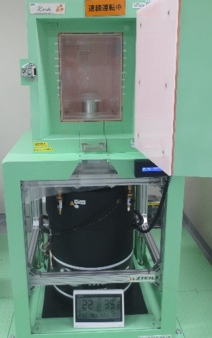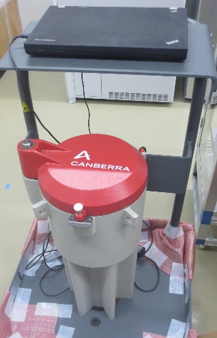Radioactivity and Air Dose Rate
(2016)
QHow is the concentration of radioactive Cs measured?
AThe Ge semiconductor detector and NaI scintillation detector are used for measurement. We use different instruments depending on our study purpose, e.g., a Ge semiconductor detector is used primarily when detailed tests are required; a NaI scintillation detector is primarily used for conducting simple tests at a massive scale.
- To understand the movement of radioactive Cs in the environment, highly precise measurements of the concentrations must be performed. Therefore, CLADS of the Japan Atomic Energy Agency uses Ge semiconductor detectors to obtain radioactive Cs concentration data.
- CLADS of Japan Atomic Energy Agency is certified as a test laboratory for radioactivity measurement (object nuclide: 134Cs and 137Cs) based on international standard ISO/IEC 17025:2005 (General requirements for the competence of testing and calibration laboratories) in October 2015.
| Analytical instrument | Ge semiconductor detector | NaI scintillation detector |
|---|---|---|
| External view |  |
 |
| Price | Ten and several millions to tens of millions of yen | Several hundred thousand to several millions of yen |
| Weight | 1–2 tons | Approx. 100 kg |
| Measurement environment | Cooling by liquid nitrogen and an electric system is required. | As long as it is stable, measurements can be performed at room temperature |
| Features |
|
|
| Usage example |
|
